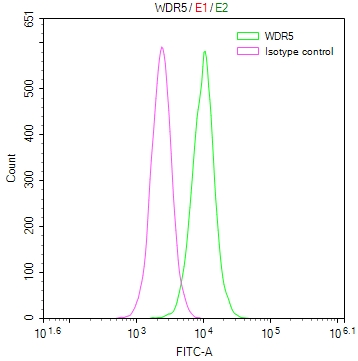-
中文名稱:botA兔多克隆抗體
-
貨號:CSB-PA320799LA01CLQ
-
規(guī)格:¥440
-
其他:
產(chǎn)品詳情
-
Uniprot No.:
-
別名:botA; atx; bonT; Botulinum neurotoxin type A; BoNT/A; Bontoxilysin-A; BOTOX; Botulinum neurotoxin type A1)
-
宿主:Rabbit
-
反應(yīng)種屬:Clostridium botulinum
-
免疫原:Recombinant Clostridium botulinum Botulinum neurotoxin type A protein (1-436AA)
-
免疫原種屬:Clostridium botulinum
-
標(biāo)記方式:Non-conjugated
本頁面中的產(chǎn)品,botA Antibody (CSB-PA320799LA01CLQ),的標(biāo)記方式是Non-conjugated。對于botA Antibody,我們還提供其他標(biāo)記。見下表:
-
克隆類型:Polyclonal
-
抗體亞型:IgG
-
純化方式:>95%, Protein G purified
-
濃度:It differs from different batches. Please contact us to confirm it.
-
保存緩沖液:Preservative: 0.03% Proclin 300
Constituents: 50% Glycerol, 0.01M PBS, PH 7.4 -
產(chǎn)品提供形式:Liquid
-
應(yīng)用范圍:ELISA
-
Protocols:
-
儲存條件:Upon receipt, store at -20°C or -80°C. Avoid repeated freeze.
-
貨期:Basically, we can dispatch the products out in 1-3 working days after receiving your orders. Delivery time maybe differs from different purchasing way or location, please kindly consult your local distributors for specific delivery time.
-
用途:For Research Use Only. Not for use in diagnostic or therapeutic procedures.
相關(guān)產(chǎn)品
靶點詳情
-
功能:Botulinum toxin causes flaccid paralysis by inhibiting neurotransmitter (acetylcholine) release from the presynaptic membranes of nerve terminals of the eukaryotic host skeletal and autonomic nervous system, with frequent heart or respiratory failure. Precursor of botulinum neurotoxin A which has 2 coreceptors; complex polysialylated gangliosides found on neural tissue and specific membrane-anchored proteins of synaptic vesicles. Receptor proteins are exposed on host presynaptic cell membrane during neurotransmitter release, when the toxin heavy chain (HC) binds to them. Upon synaptic vesicle recycling the toxin is taken up via the endocytic pathway. When the pH of the toxin-containing endosome drops a structural rearrangement occurs so that the N-terminus of the HC forms pores that allows the light chain (LC) to translocate into the cytosol. Once in the cytosol the disulfide bond linking the 2 subunits is reduced and LC cleaves its target protein on synaptic vesicles, preventing their fusion with the cytoplasmic membrane and thus neurotransmitter release. Toxin activity requires polysialylated gangliosides; GT1b supports activity better than GD1a. Binds to host peripheral neuronal presynaptic membranes via the synaptic vesicle glycoproteins SV2A, SV2B and SV2C. It binds directly to the largest lumenal (intravesicular) loop of SV2A, SV2B and SV2C that is transiently exposed outside of cells during exocytosis; gangliosides enhance binding. Recognizes an N-linked glycan on SV2 proteins. May also use FGFR3 as a receptor. Toxin uptake into neural cells requires stimulation (incubation with K(+) to stimulate receptor exposure) to be internalized by receptor-mediated endocytosis. Subsequently the toxin colocalizes with its receptor in host cells. Toxin uptake can be blocked by the appropriate SV2 protein fragments in cell culture.; Has proteolytic activity. After translocation into the eukaryotic host cytosol LC hydrolyzes the '197-Gln-|-Arg-198' bond in SNAP25, blocking neurotransmitter release. Recognizes the '146-Met--Gly-155' region of SNAP25, which confers substrate specificity. Hydrolyzes the '202-Thr-|-Arg-203' bond of mouse SNAP23, but not in human which has a different sequence. Reduction of the interchain disulfide bond occurs in the host cytosol and probably prevents retrotranslocation into the synaptic vesicle. Has slow (occurs over 4 weeks) autocatalytic cleavage, however it is not clear if this is physiologically relevant.; Responsible for host epithelial cell transcytosis, host nerve cell targeting and translocation of botulinum neurotoxin A light chain (LC) into host cytosol. Composed of 3 subdomains; the translocation domain (TD), and N-terminus and C-terminus of the receptor-binding domain (RBD). The RBD is responsible for binding to host epithelial cells and transcytosis across them; this uses different receptors than those on nerve cells. RBD is also responsible for adherence of toxin to host nerve cell surface; HC alone prevents uptake of whole toxin by neural cells, and delays paralysis onset by 75%. Isolated RBD also delays paralysis onset. The N-terminus of the RBD binds to phosphatidylinositol, which might play a role in membrane-binding. Binds to host protein receptor synaptic vesicle glycoproteins SV2A, SV2B and SV2C via lumenal loop 4. Binding can be inhibited by protein fragments from either the HC or SV2C. Isolated HC significantly decreases uptake and toxicity of whole BoNT/A, but also interferes with uptake of BoNT/E and to a lesser extent BoNT/F. The RBD recognizes the N-linked glycan on 'Asn-559' of SV2A, SV2B and SV2C; hydrogen-bonding occurs via 10 well-defined water molecules and stacking of hydrophobic residues. Binds one host GT1b ganglioside, which serves as a coreceptor. Modeling shows the HC can bind both coreceptors (a ganglioside and SV2 protein) simultaneously at different sites. Crystals of the RBD with a GT1b analog can be grown at pH 5.5, indicating the toxin-ganglioside complex could be stable within the endosome. Isolated RBD binds NTNHA (a bacterial protein that protects toxin) with high affinity at pH 6.0 but not at pH 7.5. The N-terminal belt (residues 449-545) wraps around the perimeter of the LC, probably protecting Zn(2+) in the active site; it is not required for channel formation by the TD domain but may serve to prevent premature LC dissociation from the translocation channel and to protect toxin prior to translocation. The isolated TD forms transmembrane channels of about 15 Angstroms in the absence of a pH gradient; LC translocation requires a pH and redox gradient (pH 5.0/oxidizing in the cis compartment, pH 7.0/reducing in the trans compartment), LC does not unfold unless the cis pH is 6.0 or less. Pores are presumably made by 1-2 toxin molecules. While interaction with the RBD modulates the pH threshold for membrane insertion, the RBD is not essential for toxin degradation of SNAP25 in neural cells.
-
亞細胞定位:[Botulinum neurotoxin type A]: Secreted. Secreted, cell wall. Host cell junction, host synapse, host presynaptic cell membrane.; [Botulinum neurotoxin A light chain]: Secreted. Host cytoplasm, host cytosol.; [Botulinum neurotoxin A heavy chain]: Secreted. Host cell junction, host synapse, host presynaptic cell membrane. Host cytoplasmic vesicle, host secretory vesicle, host synaptic vesicle membrane; Multi-pass membrane protein.
Most popular with customers
-
-
YWHAB Recombinant Monoclonal Antibody
Applications: ELISA, WB, IHC, IF, FC
Species Reactivity: Human, Mouse, Rat
-
Phospho-YAP1 (S127) Recombinant Monoclonal Antibody
Applications: ELISA, WB, IHC
Species Reactivity: Human
-
-
-
-
-



















